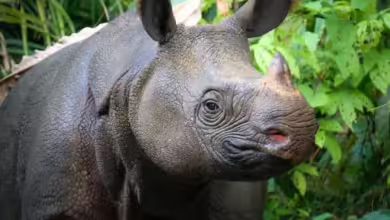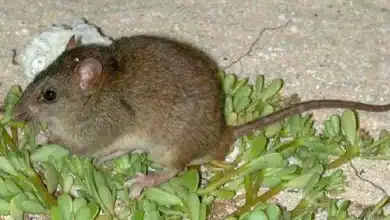Endangered Species Population Numbers
We have said elsewhere on this site that there are well over 5,000 species of officially Endangered or Threatened animals and birds on our planet. With this post, we will be providing you with ongoing and constantly updated population estimates and other information concerning the status of some of the Endangered, Threatened and Vulnerable species that are of special public concern—as well as statistics and status info on creatures that we think are special, in spite of their not being well known. Please check back frequently for the most recent updates—just click on the “Endangered Species Numbers” link in the navigation bar.
Endangered Species By The Numbers
Unless otherwise noted, all endangered species status information and population figures are taken from the IUCN Red List of Threatened Species. Listings are alphabetical, by common name.
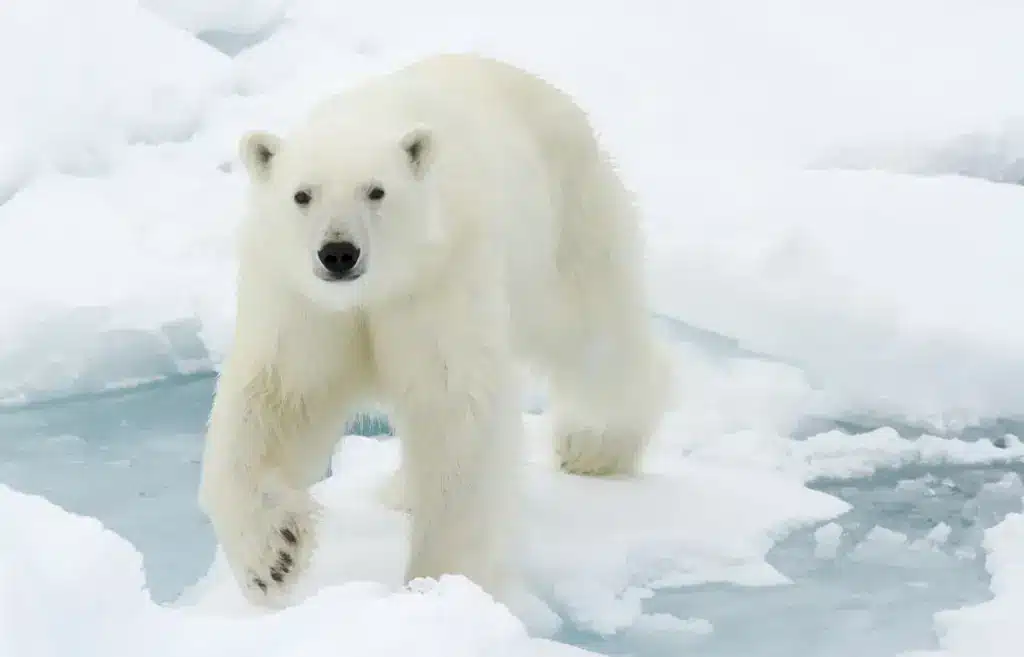
Bears
Polar Bear (Ursus maritimus)
Population: 20,000 to 25,000 Status: Threatened Species
Trends: Very likely declining due to habitat loss brought on by climate-change-induced melting of Arctic sea ice and shelf ice.
Giant Panda (Ailuropoda melanoleuca)
Population: 1,000 to 2,000 in the wild. Status: Endangered Species
Trends: Still decreasing due to habitat loss
Grizzly Bear (Ursus arctos horribilis)
Population: More than 500 in the US Lower 48, most in the greater Yellowstone National Park region. Status: Threatened Species under the US Endangered Species Act (ESA).
Trends: Increasing. At its low point several decades ago, the grizzly population was down to 140. ESA protections were removed from grizzlies in 2008, but restored in 2009 following a lawsuit by conservation organizations.
American Bison
(Bison bison)
Population: 19,000 plains bison and 11,000 woods bison exist in conservation herds. Status: Near-Endangered Species. Note: Bison kept in commercial herds are not included in these numbers.
Trends: The bison was hunted to near-extinction in the 19th Century before conservation measures were put into place. It’s Near-Endangered status is based on the fact that the species’ survival requires management of bison (aka buffalo) herds.
Camels
Wild Bactrian (two-humped) Camel (Camelus ferus)
Population: 600 in China; 350 in Mongolia. Status: Critically Endangered Species.
Trends. Declining due to illegal hunting for food. In the mid-1980’s, the Mongolian population was above 600.
One-Humped Camel (Camelus dromedarius)
Population: Extinct in the wild. Thriving feral populations exist in Australia.
Cheetah
(Acinonyx jubatus)
Population: Between 7,000 and 10,000. Status: Vulnerable Species.
Trends: Decreasing due to habitat loss
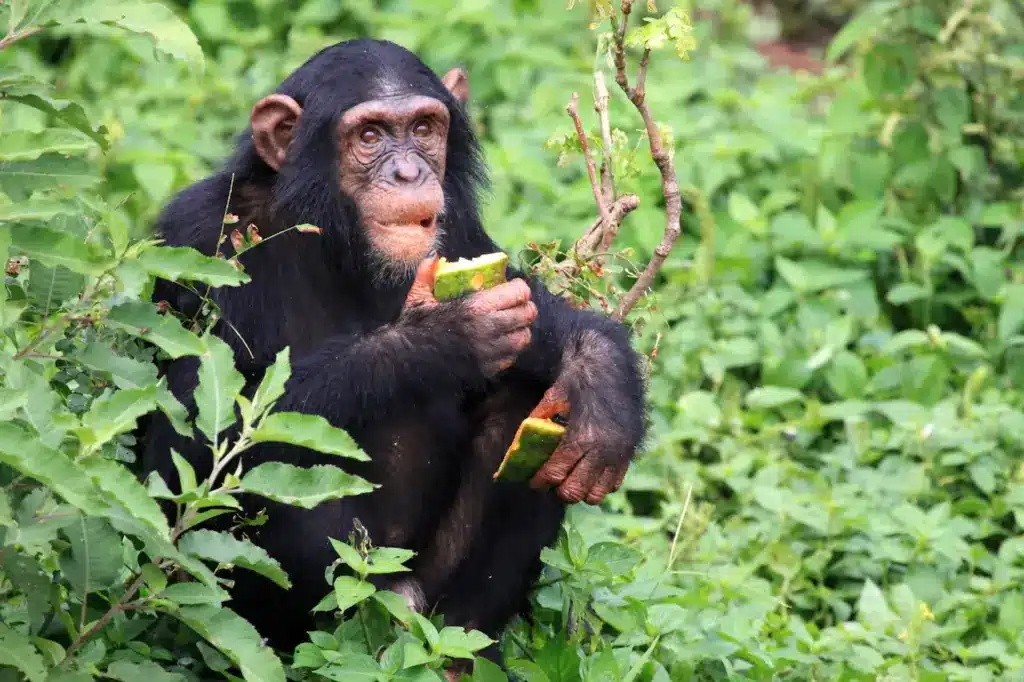
Chimpanzees
Common Chimpanzee (Pan troglodytes)
Population: Between 150,000 and 250,000. Status: Endangered Species
Trends: Declining Rapidly due to habitat loss and illegal hunting. Chimps are used for food in Africa. An estimated 1 million to 2 million chimps lived in African forests a century ago.
Bonobo (Pan paniscus)
Population: Between 30,000 and 50,000. Status: Endangered Species.
Trends: Declining due to habitat loss and illegal hunting.
Condors
California Condor (Gymnogyps californianus)
Population: 130. Status: Critically Endangered Species
Trend: Increasing due to captive breeding programs
Andean Condor (Vultur gryphus) Note: Widest wingspan of any bird in the world
Population: Unknown but declining due to human persecution based on claims that it kills livestock. Status: Near Threatened Species.
Dolphins
South Asian River Dolphin (Platanista gangetica)
Population: Fewer than 1,000. Status: Endangered Species.
Trend: Decreasing due to dams, water projects and water pollution.
Baijo, or Yangtze River Dolphin (Lipotes vexillifer)
Population: Not seen in years. Probably our first cetacean to have gone extinct.
Elephants
Asian Elephant (Elephus maximus)
Population: 40,000 to 50,000. Status: Endangered Species
Trends: Decreasing due to habitat loss and illegal hunting
African Elephant (Loxodonta africanus)
Population: Between 470,000 and 690,000 (World Wildlife Fund figures). Status: Near Threatened Species
Trends: Until recently, population numbers were increasing. But a recent upsurge in poaching may have ended this positive trend. African elephants are also threatened by habitat loss.
Gorillas
Total Population in the Wild: around 107,000
Subspecies:
Eastern Gorillas
Mountain Gorilla (Gorilla beringei)
Population: Fewer than 700 Status: Endangered Species
Grauer’s Gorilla (Gorilla beningei graueri)
Population: Fewer than 16,000 Status: Endangered Species
Western Gorillas
Lowland Gorilla (Gorilla gorilla gorilla)
Population: 90,000 Status: Critically Endangered Species
Cross River Gorilla (Gorilla gorilla dielli)
Population: Fewer than 300. Status: Critically Endangered Species
Trends: Due to intensive conservation efforts, the population of the mountain gorilla appears stable for now. The other gorillas are vanishing quickly due to intensive illegal hunting and habitat loss.
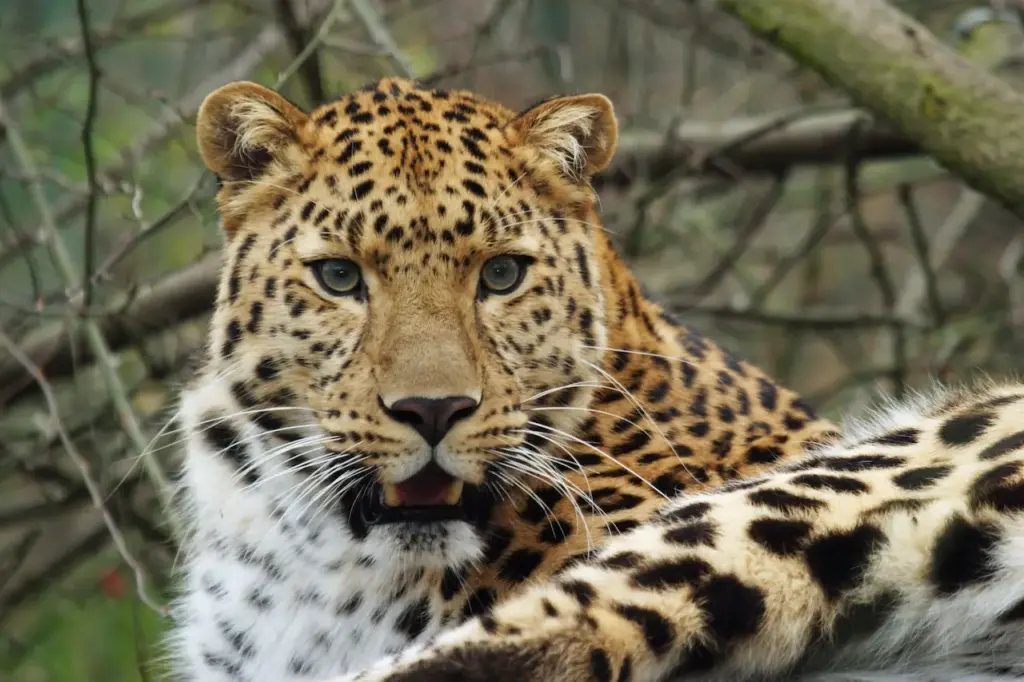
Leopards
Amur Leopard (Panthera pardus orientalis) Status: Critically Endangered Species.
Population: Few than 40 individuals left of this leopard subspecies that shares its frigid habit with the Siberian tiger.
Trends: Decreasing due to habitat loss and illegal hunting. Also threatened by a lack of genetic diversity due to its small population.
Snow Leopard (Panthera unica)
Population: 4,000 to 6,600. Status: Endangered Species
Trends: Declining due to declining prey base and loss of habitat.
Clouded Leopards (Neofilis nebulosa) sp.: several subspecies
Population & Trends: Numbers unknown, but the numbers of this small Asian rainforest leopard species are known to be declining due to illegal hunting and habitat loss.
Lions
African Lion (Panthera leo)
Population: Est. 30,000 to 50,000. Status: Vulnerable Species.
Trends: Downward due to a declining prey base and killing by humans in defense of livestock herds. Size of the African lion population three decades ago was probably double what it is now.
Asiatic Lion (Panthera leo persica)
Population: 350 Asiatic lions remain in one area of India. Status: Endangered species.
Trends: Stable.
Orangutans
Sumatran Orangutan (Pongo abelii)
Population: Around 7,000 Status: Critically Endangered Species
Trends: Decreasing rapidly due to habitat loss
Borneo Orangutan (Pongo pygmaeus)
Population: Between 40,000 and 65,000. Status: Endangered Species
Trends: Decreasing rapidly due to habitat loss
Panther
(Florida)
(Puma concolor coryi)
Population: Around 80. Status: Listed as an Endangered Species under the ESA
Trends: Decreasing. This is a rare and beleaguered Southeastern subspecies of the mountain lion (AKA cougar or puma), which is thriving in the western half of the US in the wake of federal protections. Threats to the Florida panther include habitat loss and fragmentation, as well as mortality due to automobile strikes.
Rhinoceros
White Rhinoceros (Africa) (Ceratotherium simum)
Population: 17,000 Status: Near-Threatened Species
Black Rhinoceros (Africa) (Diceros bicornis)
Population: 3,500 Status: Critically Endangered Species
Indian Rhinoceros (Asia) (Rhinoceros unicornis)
Population: 2,500 Status: Vulnerable Species
Sumatran Rhinoceros (Southeast Asia; Indonesia) (Dicerorhinus sumatrensis)
Population: 300 or fewer. Status: Critically Endangered Species
Javan Rhinoceros (Vietnam; Indonesia) (Rhiniceros sondaica)
Population: 60 Status: Critically Endangered Species
Trends: Populations of African and Indian subspecies appeared stable, perhaps even increasing slightly, until recently. But an upsurge in poaching in recent years has placed all species in renewed jeopardy.
Tasmanian Devil
(Sarcophilius harrisii)
Population: Around 80,000. Status: Endangered Species.
Trends: In the mid 1990’s, there were between 130,000 and 150,000 tasmanian devils in the wild. But an epidemic of Devil Facial Tumor Disease, a cancer specific to these Australian mammals, has reduced the population by over 60 percent since then.
Tiger
Total Population in the Wild: around 3,500
Subspecies:
Bengal tiger (Pantera tigris tigris)
Population: Fewer than 2,000 Status: Endangered Species
The Indochinese tiger (Pantera tigris corbetti)
Population: Fewer than 500. Status: Endangered Species
Malayan Tiger (Pantera tigris jacksoni)
Population: Fewer than 500 Status: Endangered Species
Sumatran tiger (Pantera tigris sumatrae)
Population: Fewer than 500 Status: Critically Endangered Species
Siberian Tiger (Pantera tigris alataica)
Population: Around 500 Status: Endangered Species
South China tiger (Pantera tigris amoyensis)
Population: No sightings in years. May be 0. Status: Critically Endangered Species
Trends: The Siberian tiger is the only subspecies whose population is stable. The others are declining. Main threats are illegal hunting and habitat loss.
Whales
Blue Whale (Balaenoptera musculus)
Population: 10,000 to 25,000. Status: Endangered Species.
Trends: Increasing. The whaling industry, which drove the largest animal earth has ever seen toward extinction, ceased to operate decades ago—but not before the blue whale’s population had fallen by more than 90 percent.
Northern Right Whale (Eubalena glacialis)
Population: Around 350. Status: Endangered Species
Trends: Unknown. Driven to the brink of extinction by the whaling industry; now enjoys international protection.
North Pacific Right Whale (Eubalena japonica)
Population: Fewer than 1,000. Status: Endangered Species.
Trends: Unknown. Driven to the brink of extinction by the whaling industry; now enjoys international protection.
Sperm Whale (Physeter macrocephalus)
Population: Probably fewer than 400,000; down from well over 1 million at the turn of the 20th Century. Status: Vulnerable Species
Trends: Unknown.
Narwhal (Monodon monoceros)
Population: Over 80,000 worldwide. Status: Near-Threatened Species.
Trends: Decreasing due to hunting, climate change and industrial activities.
Beluga Whale (Delphinapterus leucas) AKA White Whale
Population: Above 150,000 worldwide. Status. Near-Threatened Species.
Trends: Decreasing due to hunting, climate change and industrial activities.
Wolves
Gray Wolf (Canis lupus)
Population in the US Lower 48: About 1,600 in the northern Rockies, including the Greater Yellowstone area, and about 5,000 in Minnesota, Michigan and Wisconsin.
Status: Recently removed from Endangered Species Act (ESA) protection in Montana and Idaho. Conservation groups are contesting the removal. Reinstated as a Threatened Species in the US Midwest under the ESA in 2009 following lawsuits by conservationists who contested the delisting of the species.
Trends: Increasing. Threats include removal of ESA protections in Montana and Idaho, which has led to hunting seasons on the species, and may lead to more killing by humans overall.
Red Wolf (Canis rufus)
Population: About 100. Status: Endangered Species.
Trends: Increasing. The red wolf was declared extinct in the wild in 1980 after the last 17 animals were captured on the Gulf Coast of Texas. After captive breeding increased their numbers, the animals were reintroduced to North Carolina. Largest threat to the species is hybridization with coyotes.
Zebras
Grevy’s Zebra (Equus grevyi)
Population: Around 2,000. Status: Endangered Species.
Trends: Stable. Threats include reduction of water resources and habitat degradation.
Cape Mountain Zebra (Equus zebra)
Population: Around 1,500. Status: Vulnerable Species.
Trends: Increasing. Threats include crossing with Hartmann’s mountain zebra, a much more numerous (but also Vulnerable) subspecies of mountain zebra that was introduced into the cape mountain Zebra’s southern African range.
Do your own Endangered Species research: Visit The IUNCN Red List online.
Read about endangered species that conservationists have saved from extinction.

